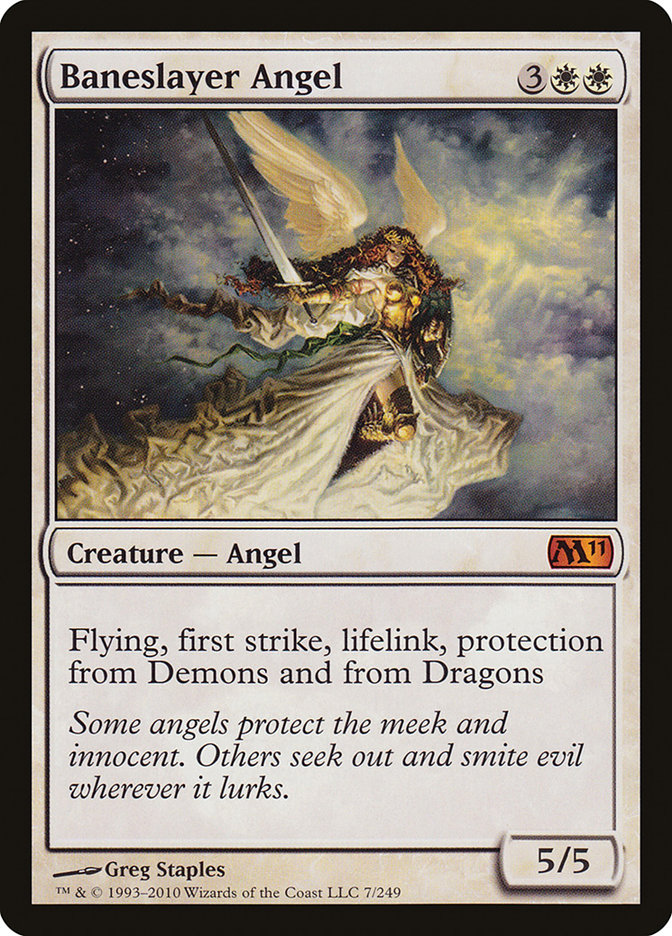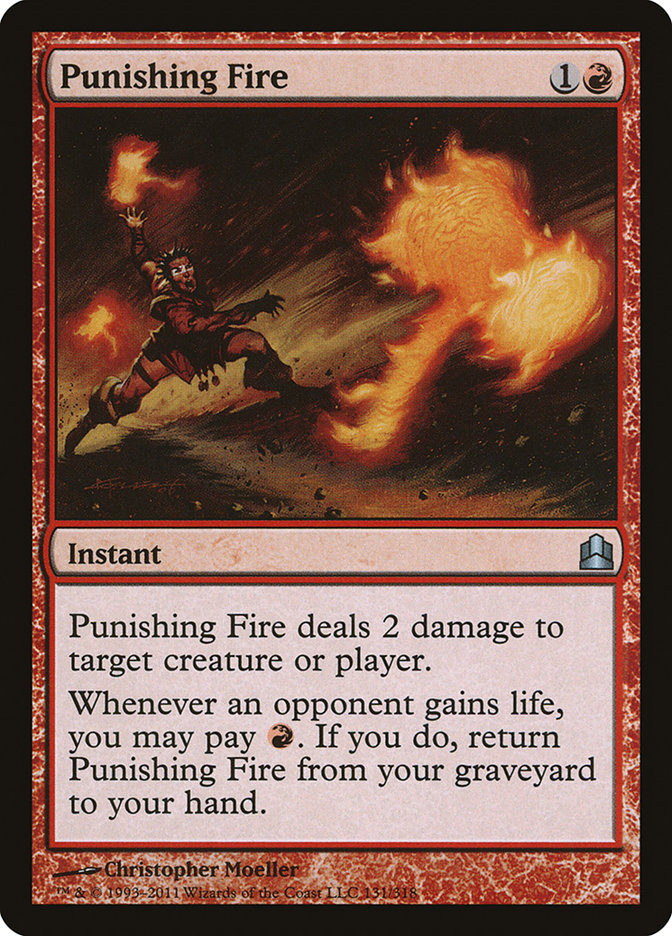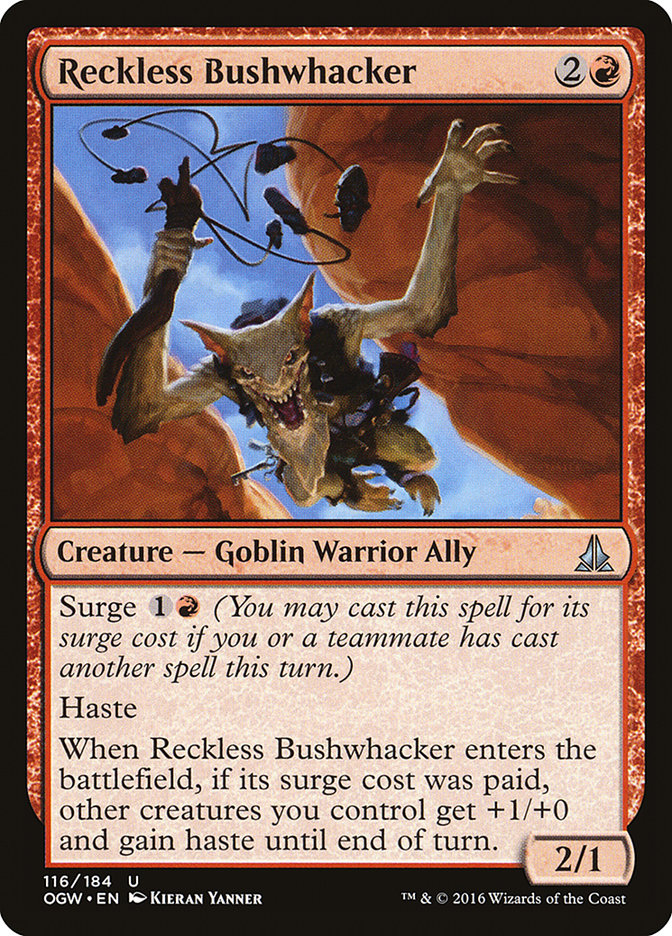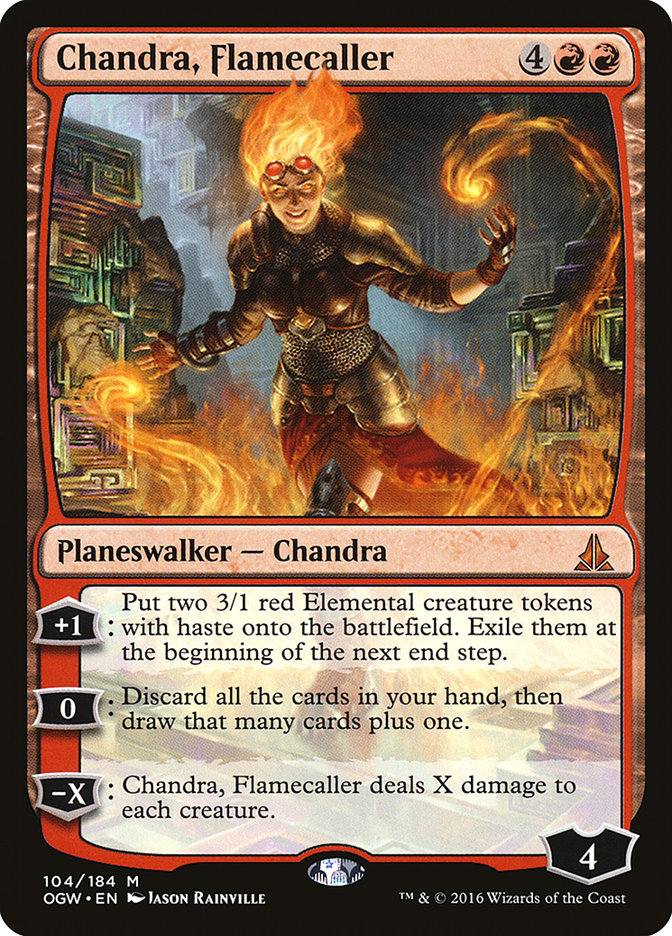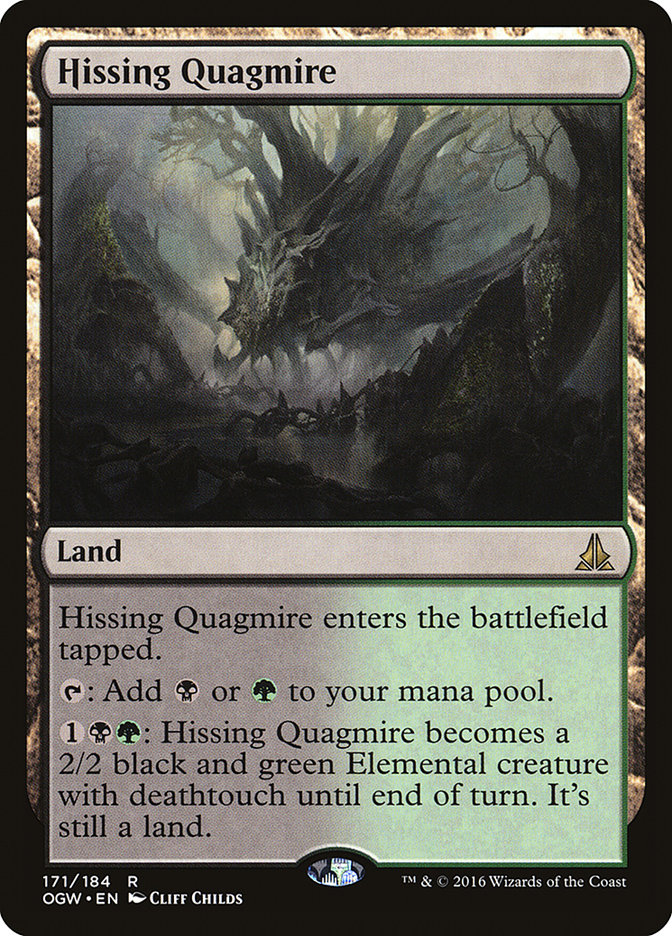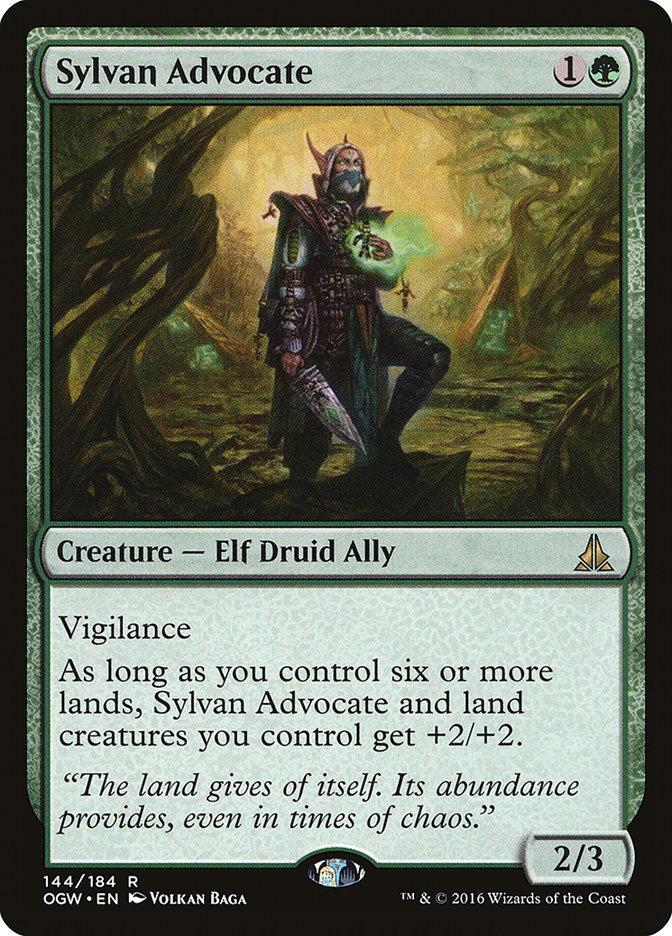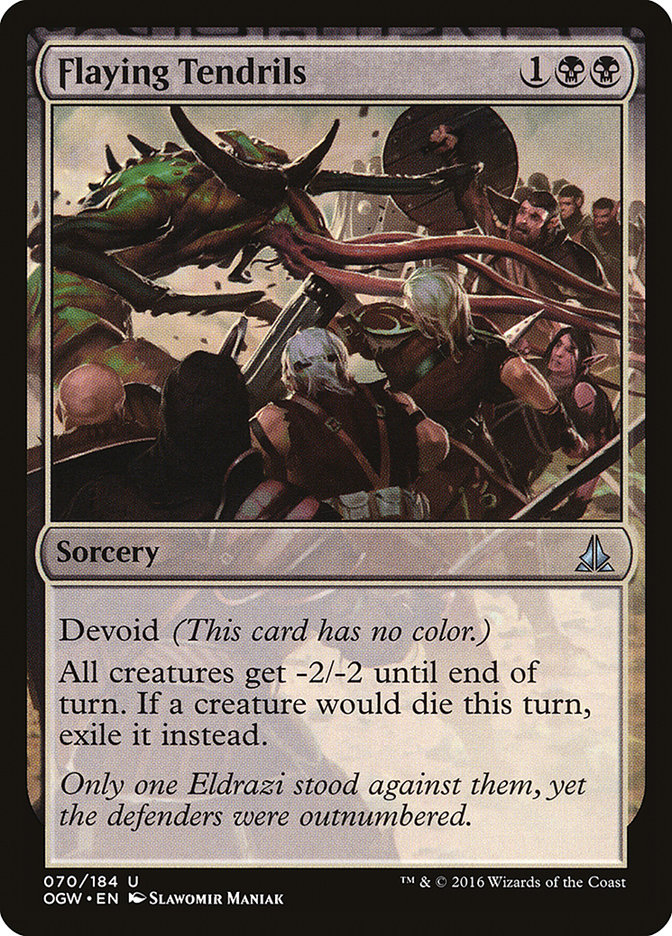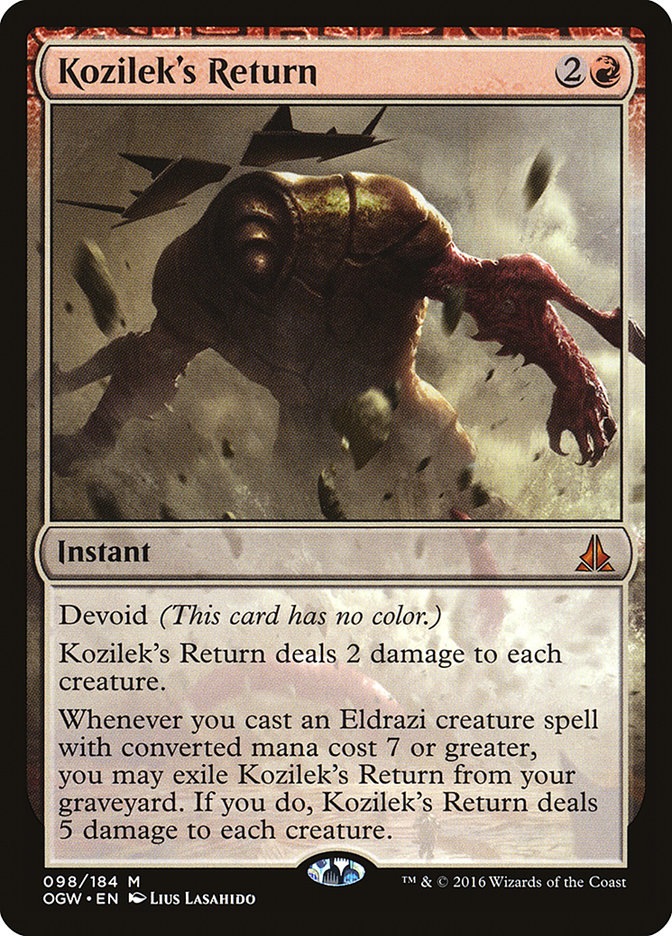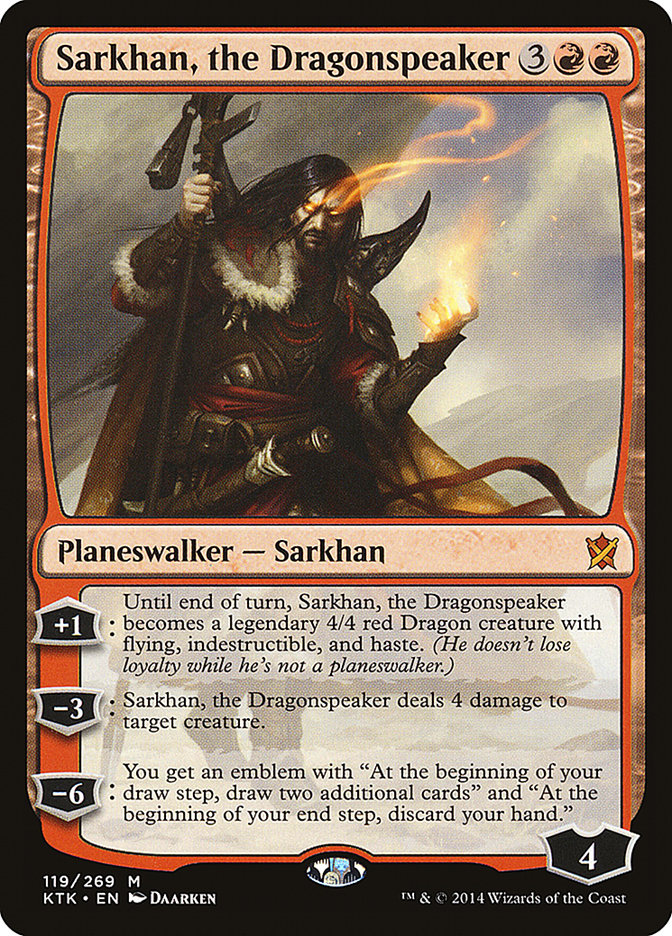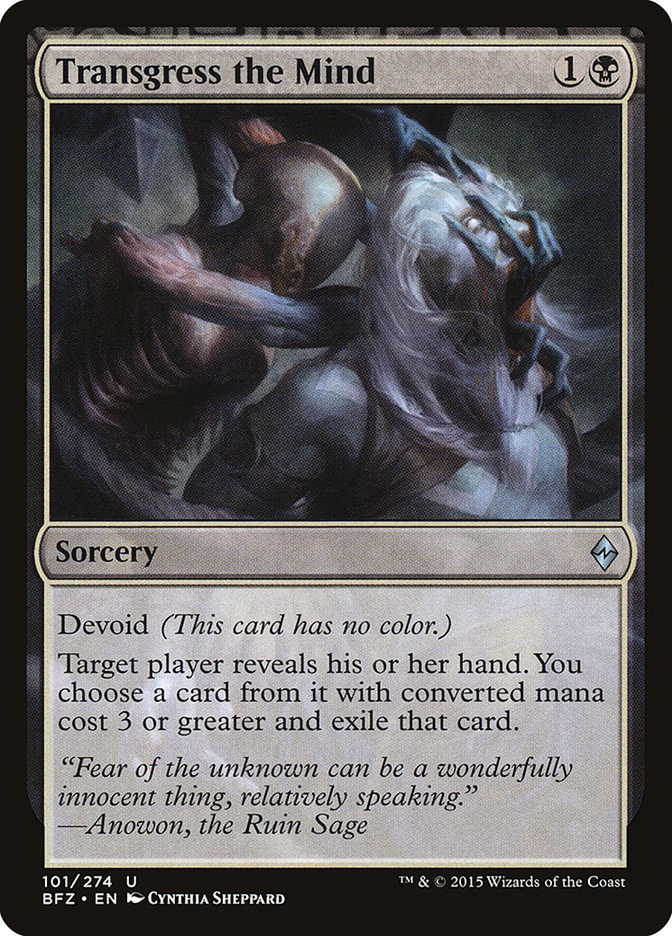The SCG Tour® passed through my old stomping grounds in Atlanta this past weekend to kick off the Standard season with Oath of the Gatewatch, and while I was not able to make an appearance at the event myself, I did make sure to keep up with the coverage so I could watch the new environment unfold.
And the new set did not disappoint.
While we certainly saw many similar decks to those that already made up the metagame, it was clear that Oath of the Gatewatch made a big impact from the start, offering tools to old favorites and inspiring entirely new archetypes.
And of course, it just wouldn’t have been an inaugural weekend for a new Standard format without an aggressive red deck winning the whole thing, would it?
Creatures (14)
Lands (22)
Spells (24)

A lot has been said about Korey’s deck already, so I don’t want to rehash too much. I do, however, want to mention how much I love the fact that he took a strong, well-known archetype and twisted it just enough that people would suddenly be unprepared for his gameplan.
I’ve always been a fan of strategies that exploit information asymmetry, meaning that your opponent doesn’t have full information about what you’re doing, while you’re likely to be prepared for them. While sometimes you can play a totally off-the-wall strategy to keep your opponents guessing, you’re often better served playing a strong core of cards that may be part of an established deck, but with enough differences to shift the optimal way for your opponents to play the matchup.
I’ve had a great deal of success with this style of deckbuilding, from my PT Austin-winning Zoo deck that incorporated Baneslayer Angel and Punishing Fire to my PT Chicago 2000 Top 4 with “Red Zone,” a Naya deck that played many of the same tools as the popular Fires of Yavimaya decks but eschewed Fires of Yavimaya and Saproling Burst for utility cards like Wax // Wane and Armageddon – and, of course, Rith, the Awakener. In both tournaments, I won games because my opponents thought I had cards that I didn’t, and didn’t play around cards that I actually had.
Amusingly, we saw exactly this style of deckbuilding succeed for Brian DeMars at the beginning of the last Standard season, when he took down the first Standard Open with Atarka Red featuring the Become Immense plus Temur Battle Rage combo. I’m sure many of his opponents approached the games as if they were playing against a less explosive style of red deck, trying to preserve their life total and set up big blockers, only to be blown out by a huge burst of damage in a single turn.
Korey turned that on its head by taking out the combo. If you expect a world full of cheap spot removal and opponents who are trying to play around it, Temur Battle Rage really is not where you want to be. Korey realized that, and instead decided to go wide with a token plan, supplemented by the new Reckless Bushwhacker. Bushwhacker may not offer as much explosive damage potential as Become Immense plus Temur Battle Rage, but it can allow for a burst finish from an empty board that isn’t vulnerable to a single Murderous Cut or Fiery Impulse. I have to imagine many of his opponents felt safe holding up removal and then died to an angry swarm of goblin tokens they didn’t have the tools to answer.
It will be interesting to see if Korey’s version becomes the norm for red decks moving forward. If it does, perhaps soon it will be time to flip the script once again and go back to the combo to catch people sleeping.
Isn’t Magic metagaming grand?
My New Best Friend
My own focus has been primarily on Modern lately with #PTOGW coming up in Atlanta next week, but that hasn’t kept me from doing a little brewing on the side. I mentioned in my last article before the new set’s release that Kalitas, Traitor of Ghet was one of the cards that had me most excited for Oath of the Gatewatch, and the card’s impressive showing over the weekend certainly didn’t dampen that enthusiasm.
In fact, it made me think back to the Temur Black deck that I played at the Invitational in Vegas last month.
Creatures (21)
- 4 Rattleclaw Mystic
- 2 Tasigur, the Golden Fang
- 4 Den Protector
- 4 Deathmist Raptor
- 2 Jace, Vryn's Prodigy
- 2 Nissa, Vastwood Seer
- 3 Woodland Wanderer
Planeswalkers (4)
Lands (25)
Spells (10)

This deck did some powerful things, but ultimately it was just too clunky and took way too much damage from its fetch-heavy manabase to survive without lifegain. The deck also lacked a solid finisher, since Woodland Wanderer was mostly just a dopey body that died to Crackling Doom or Murderous Cut without generating any real value.
Kalitas solves both of those problems, since he can serve as both a big lifelinking body and a way to generate additional threats. It certainly doesn’t hurt that he pretty much shuts down Four-Color Rally antics as well.
On top of that, Oath of the Gatewatch has also brought with it several other tools to help flesh out this style of deck. Previously, I felt like I had to spread myself across four colors in order to get all of the removal, card advantage, and disruption tools that I wanted, but it might just be possible to jettison a color entirely with the new cards.
I did love Kiora, Master of the Depths and Sarkhan Unbroken – mostly Sarkhan – and I expect to build more decks around him soon, because he’s one of the most underrated cards in Standard, but I think it’s time for them to go.
Here’s what I’m thinking of trying out:
Creatures (17)
- 4 Den Protector
- 3 Nissa, Vastwood Seer
- 3 Kalitas, Traitor of Ghet
- 3 Goblin Dark-Dwellers
- 4 Sylvan Advocate
Planeswalkers (4)
Lands (25)
Spells (14)

Goblin Dark-Dwellers and Chandra, Flamecaller do the heavy lifting in the late game here, taking over for the blue planeswalkers who were left behind. Both cards seem extremely powerful with their ability to generate resource advantage, put on pressure, and actually end games.
Chandra, in particular, is no joke. The turn she hits the table, she can send six points of damage at your opponent, which is a difficult clock for anyone to deal with. If the board is cluttered? Well, just minus her and sweep all of your opponent’s little creatures out of the way – preferably filling your board with zombies courtesy of Kalitas.
One of the big problems of this style of non-blue midrange deck has always been the risk of dead cards in the wrong matchup. Without loads of card draw or filtering like Dig Through Time or Jace, Vryn’s Prodigy, it’s easily to end up with a hand full of Fiery Impulses that have absolutely no value late in the game. Thankfully, Chandra’s zero ability is the perfect solution for a hand full of chaff, whether that be dead spells or extra land. You can just spin the wheel and refill. Between Chandra, Den Protector, Kolaghan’s Command, and Goblin Dark-Dwellers, you’re almost certain to have no shortage of action.
Another big upgrade from Oath of the Gatewatch is Hissing Quagmire. Not only does it serve as a pain-free dual land that can potentially trade with big threats, but more importantly, it affords you the ability to pressure an early planeswalker like Jace or Gideon. When I was playing Temur Black, falling even slightly behind a Gideon was often disastrous, because I could rarely generate enough damage to kill it in a single attack early on even if I had a removal spell for the knight. With Hissing Quagmire, however, all you need is a single two-power creature in play, and it can team up with your creature-land to do the four damage needed to take Gideon down. Later in the game, Quagmires can also get powered up by your Sylvan Advocates for sudden and serious beatdowns.
Speaking of Sylvan Advocate, that was another card I was really excited about from looking at the spoiler, and it’s already shown up in top-performing decks. The biggest draw of Sylvan Advocate is the third point of toughness on a two-drop, which takes it out of range of Fiery Impulse in the early turns of the game. One of the biggest tempo swings in Standard is losing a two-drop to your opponent’s Fiery Impulse off of a fetchland on turn one, which is a risk with just about every other two-drop in the format (except Scaleguard Sentinels – but who would ever play that?). While it may not be as aggressive as Snapping Gnarlid or Heir of the Wilds, Advocate is much more resilient to removal, which I suspect will lead toward it getting the nod in most green decks looking for a two-drop.
That third point of toughness also comes in handy when you’re playing with your own mass removal spells. Both Flaying Tendrils and Kozilek’s Return spare Sylvan Advocate while wiping out the opposing board. The sideboard here is a split between the two of them, partially as a nod to Reckless Bushwhacker – the instant speed of Kozilek’s Return can save your life against a Bushwhacker-fed token swarm – and partially out of respect for Rally demanding additional exile effects, especially now that Reflector Mage can buy a lot of time to combo against Kalitas and Anafenza.
The rest of the sideboard is mostly speculative but looks to shore up matchups against Abzan Aggro with cheap spot removal and against more controlling decks with extra disruption, card draw, and resilient threats.
I suspect the deck is vulnerable to Eldrazi Ramp, since it’s very much a value-oriented midrange deck, which is precisely the kind of strategy on which the Eldrazi prey, but I’m not entirely sure what the best direction might be to combat them. Transgress the Mind is a possible option, perhaps in place of some of the other anti-control elements in the sideboard, but it seems like the new versions of Eldrazi have a lot more threats, almost any of which can win the game.
I considered something like Kolaghan, the Storm’s Fury, but that seems like a fairly weak win condition against a deck with Thought-Knot Seer. It’s possible that Sarhkan, the Dragonspeaker may be better, since it can provide a proactive solution to Thought-Knot Seer that can also put your opponent on a clock.
It also isn’t clear yet just how big a part of the metagame Eldrazi Ramp will end up being. If it continues to have a similar metagame share to pre-Oath of the Gatewatch Standard, I probably wouldn’t worry too much about having specific cards for the matchup and would rather just be sure that I have some cards that at least offer overlap value that are also good elsewhere. And given that the most successful version so far – Chris Brickey’s second-place mono-green list from #SCGATL – is full of mana creatures to keep your cheap spot removal live and Hedron Archives that are really bad against Kolaghan’s Command, it’s possible that the matchup isn’t even that bad after all.
In any case, I think this list – or something like it – has a lot of potential in the new Standard. It has a lot of powerful tools for both tempo and resource advantage, all wrapped up with a smooth, entirely on-color fetchland manabase. Give it a spin this weekend at #SCGCOL and let me know how it goes!


